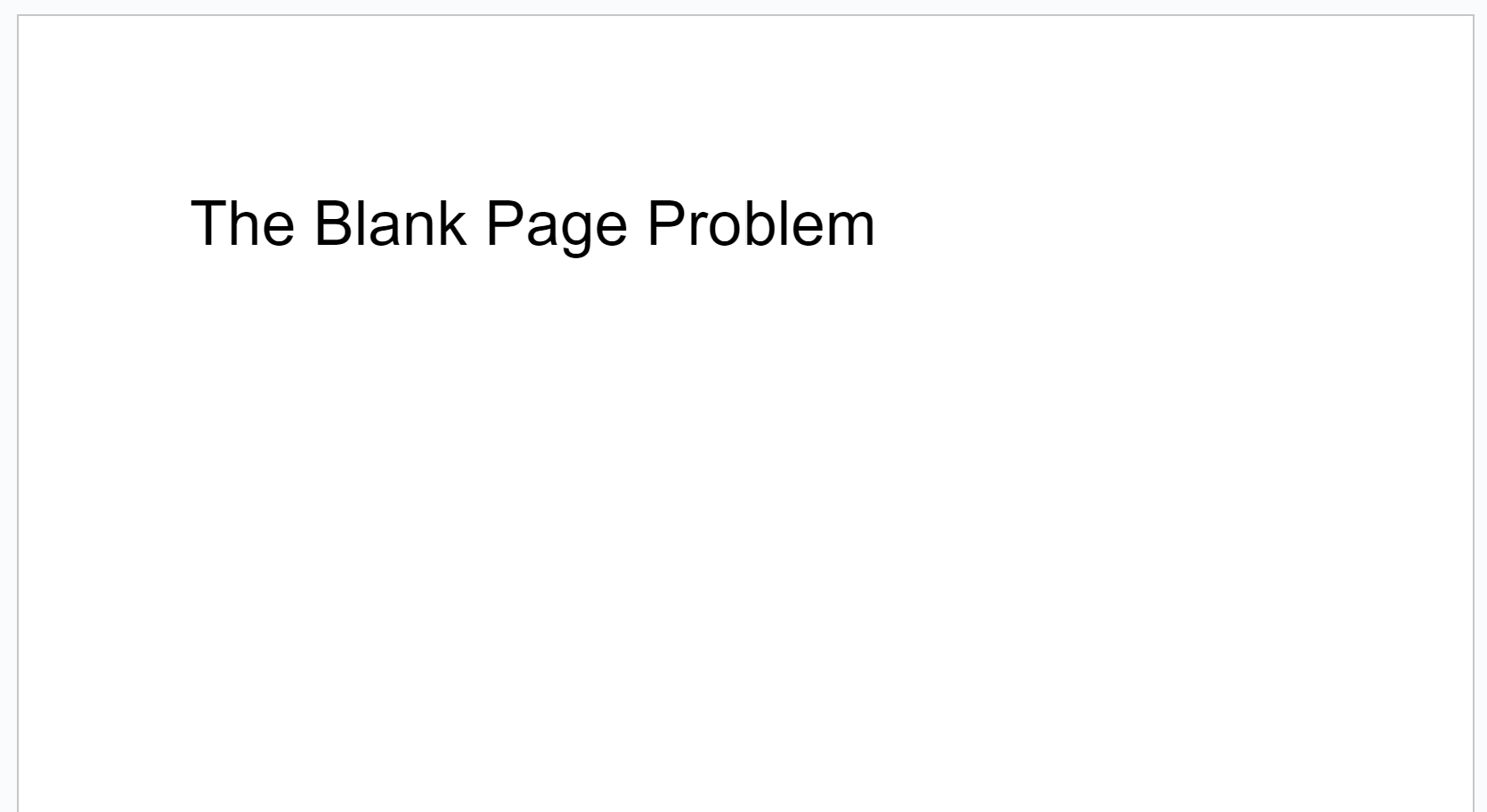I had the idea for this post in July 2021. For almost two years it looked like this:

Every now and then I would get some energy, open up the page and stare at it.
“What should I write? Where do I start? Or should it be, how do I start? Now I’m procrastinating. Why is this so hard?”
Perhaps what I needed was some music playing to help give me a kickstart. I hopped over to Spotify…

What do I want to listen to? There are literally thousands of artists I love and yet I find myself staring at an empty search box and my mind is blank.
There is something intrinsic to the blank page that tells my brain “I can be blank too!”.
Getting started
There’s no one-size-fits-all solution on the productivity and motivation ladders. But here are a few strategies I use to break the blank.
One small step
Forget about completing, take the smallest possible step to start.
Dirty dishes piling up? Turn the tap on. Don’t worry about hot or cold, don’t worry about putting the plug in or adding dishwashing liquid, just turn the tap on. Next thing you know, those pesky dishes will be sorted!
This works because of Newton’s First Law of Productivity
Objects in motion tend to stay in motion. Get started.
For the blank page, a lot of advice suggests writing one sentence. But sentences require structure and structure requires thought. Let’s go smaller and start with some words or phrases.
If something flows and you’re moving from words to sentences to paragraphs, go with it! But if not yet, that’s totally fine. Move on to other phrases or ideas, each on its own line. The important thing is to keep typing.
New thought too similar to something you’ve already written? Write it down anyway. It may turn out to be a new idea, it may be the better phrasing, or it may trigger other thoughts. Keep typing, keep the motion.
Perfection is the enemy of progress
I have a nasty habit of trying to write each title, sentence, paragraph “perfectly” before moving on to the next. This is a terrible approach.
For starters, you’re trying to write what you want before you know what you really want. Plus, in order to write the best thing now you need to know what comes next, but you can’t if you haven’t moved on from your current sentence!
This leads to slow, halting progress which destroys your momentum and you absolutely should not do this (I still did it for parts of this post, I’m a work in progress!).
Instead, turn your filter off and start writing. It doesn’t matter if it’s word vomit, it doesn’t matter if the spelling and grammar is atrocious; there are no bad ideas! No one is going to see it and re-drafts are your friend.
Zoom out
It’s easy to get bogged down in the nitty gritty of a particular sentence or paragraph. This may even happen before we have a clear idea of what we’re trying to communicate.
Much like we prefer an outside-in testing workflow, it can be useful to build an outline of the key points you would like to make. A few words for each section, taking you from intro to conclusion can bring clarity to your message. Then all that’s left is to fill in the blanks! But now you have a clear path from start to finish.
As a bonus, oftentimes the outlines end up verbatim as your subheadings!
Rubber duck
Explain it to a friend or colleague. “I have this concept I want to talk about called The Blank Page Problem. It’s about…”. Write down every, single, word you say. That there is your content.
You can also rubber duck yourself by recording into your phone. You’ll be surprised at how fully formed your thoughts are and how much you have to say in a short amount of time. You’ll be cursing your brain and asking why it couldn’t do the same when you were staring at your blank page trying to type!
Take your first step
The blank page can be frustrating and demotivating. But don’t let it steal two years of your life! Fight it with the smallest possible step and never look back.